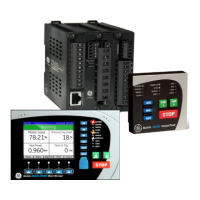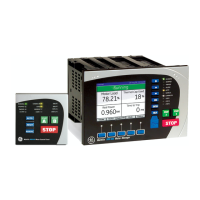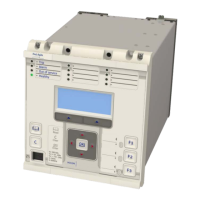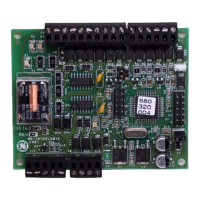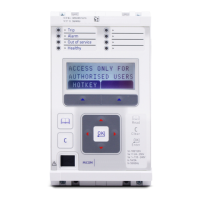3.1.2 SLOW POWER SWING DETECTION
For slow power swings (0.5Hz and below) where the superimposed current may remain below the minimum 5%In
threshold needed for the superimposed current (DI) detector, a different detection method is used. This method is
called Slow Swing detection. This method requires the Slow Swing setting to be enabled.
Note:
If the Slow Swing feature is not Enabled, very slow power swings (< 0.5 Hz) may not be detected.
The Slow Swing method is based on changing impedance measurements and uses a pair of configurable
concentric quadrilateral zones on the impedance plane (Zone 7 and Zone 8). Since power swings don’t involve
earth, the impedance measurements are based on positive sequence quantities and only phase-phase
measurements are necessary. The characteristic is shown in the following figure:
V02744
Zone 8
Zone 7
Resistive forward (+R)Resistive reverse (R’)
α
PSB Z7
PSB Z8
PSB Z7'
PSB Z8'
PSB R8
PSB R7PSB R7'PSB R8'
Z1 = V1/I1
Dt
+jX
ZL
Figure 152: Slow Power Swing detection characteristic
The elapsed time defines the rate of change of impedance. If the rate of change is high, the change is due to a
fault. If the rate of change is low, the protection indicates a slow power swing. So, if the time taken for the
impedance trajectory to pass through zone 8 into zone 7 is greater than the time defined by the PSB timer, a slow
power swing is deemed to be in progress. If the time taken for the impedance trajectory to pass through zone 8
into zone 7 is less than that defined by the PSB timer, it is deemed to be a fault.
In other words, a power swing is indicated if the following condition is true:
Dt > PSB Timer
Both Zone 7 and Zone 8 characteristics are based on the positive sequence impedance measurement; Z
1
= V
1
/I
1
.
The minimum current (sensitivity) needed for Zone 7 and Zone 8 measurements is 5%In.
P543i/P545i Chapter 10 - Power Swing Functions
P54x1i-TM-EN-1 275
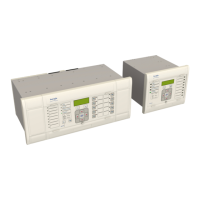
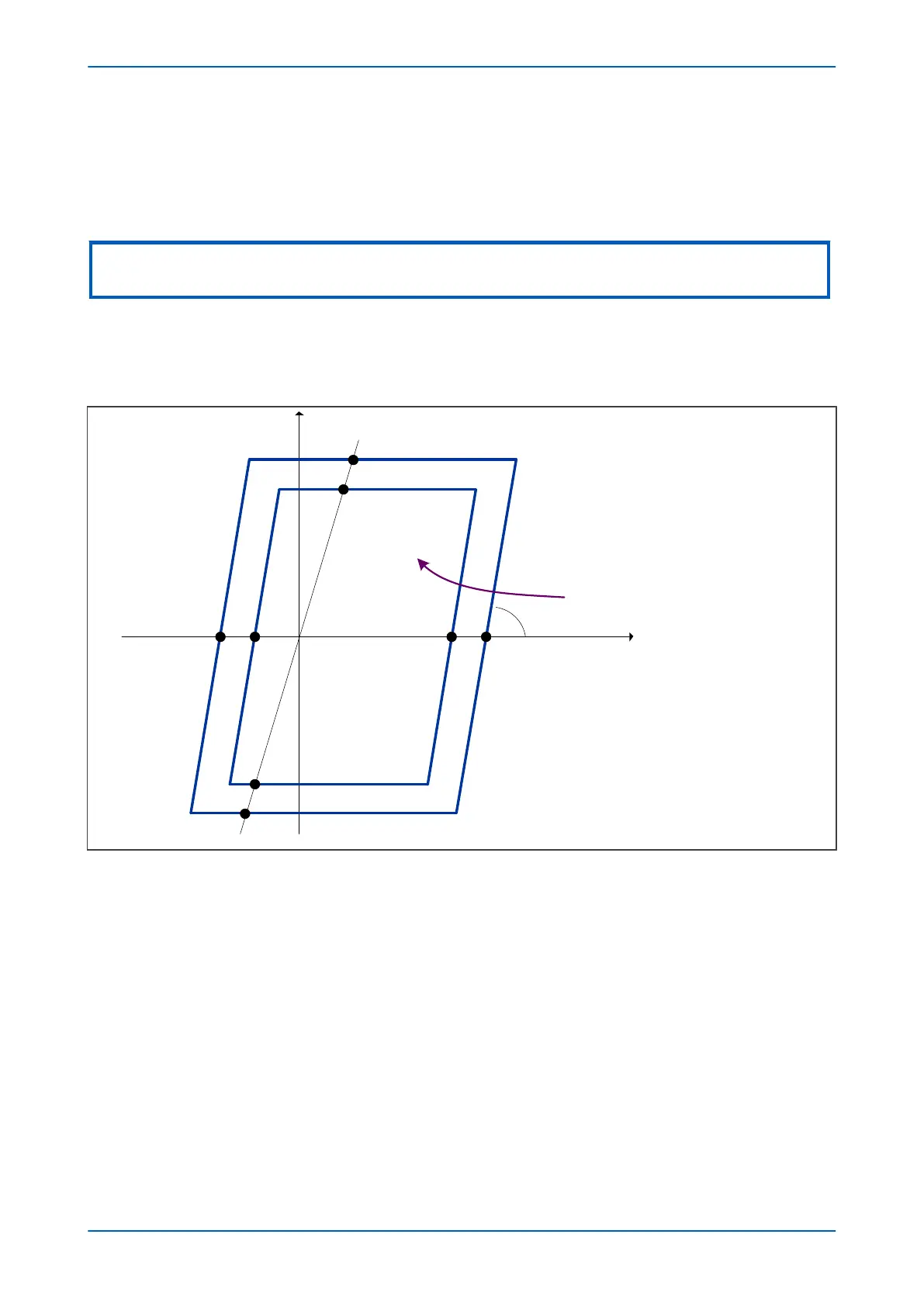